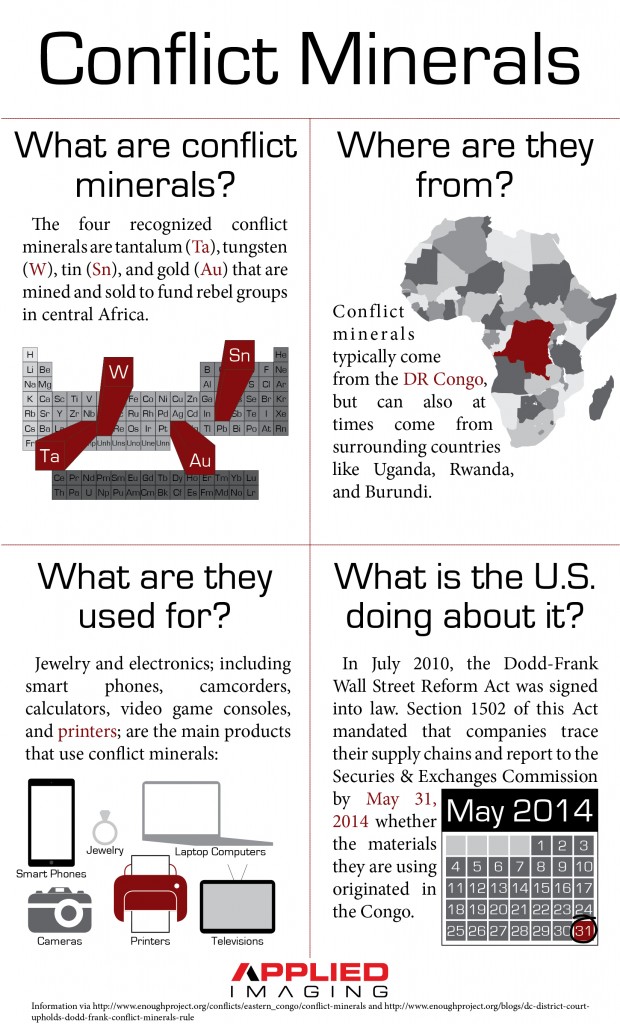For our second installment on sustainability we will be discussing the issue of conflict minerals. So what are conflict minerals? To get an in-depth discussion about conflict minerals we suggest reading this article from the Enough Project; however, if you are familiar with blood diamonds, you are familiar with the basic concept.
Known as the eleventh-largest country in the world, the Democratic Republic of Congo (see map) is also one of the richest in the world; however, it isn’t wealthy in a conventional way. It is the soil, saturated with precious minerals such as gold, tungsten, tantalum and tin, that makes Congo rich. However, because Congo has been devastated by corruption and civil war, only a few benefit from Congo’s vast natural resources. This leaves the rest of the country’s civilians in poverty; forced to mine and sell these high demand minerals to large companies, which in turn fund the local rebel groups.
At Applied Innovation, we believe the printers, scanners, multifunctions and copiers we provide should not fund these world conflicts. That is why we are pleased that, according to the Enough Project, “companies that use key minerals from Congo must now disclose their sources and measures they are taking to ensure that the minerals purchased do not fuel conflict.” One of these companies taking a positive step forward with this initiative is Ricoh. According to a Ricoh statement in 2012, the company is “constantly working to improve transparency in the supply chain.” Applied is proud to be partnered with manufacturers like Ricoh that take the necessary precautions to promote ethical work and supply flows, while providing top-of-the-line equipment solutions.

